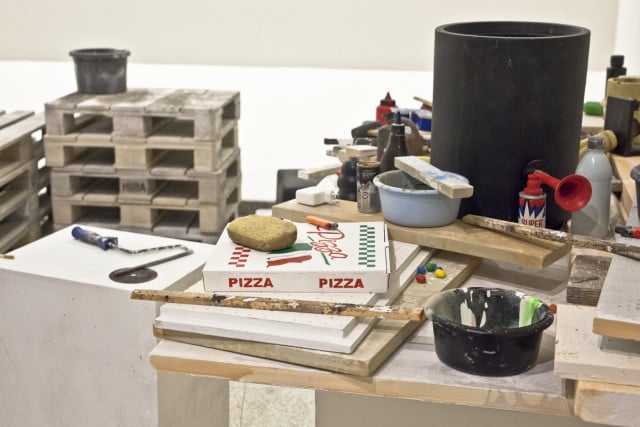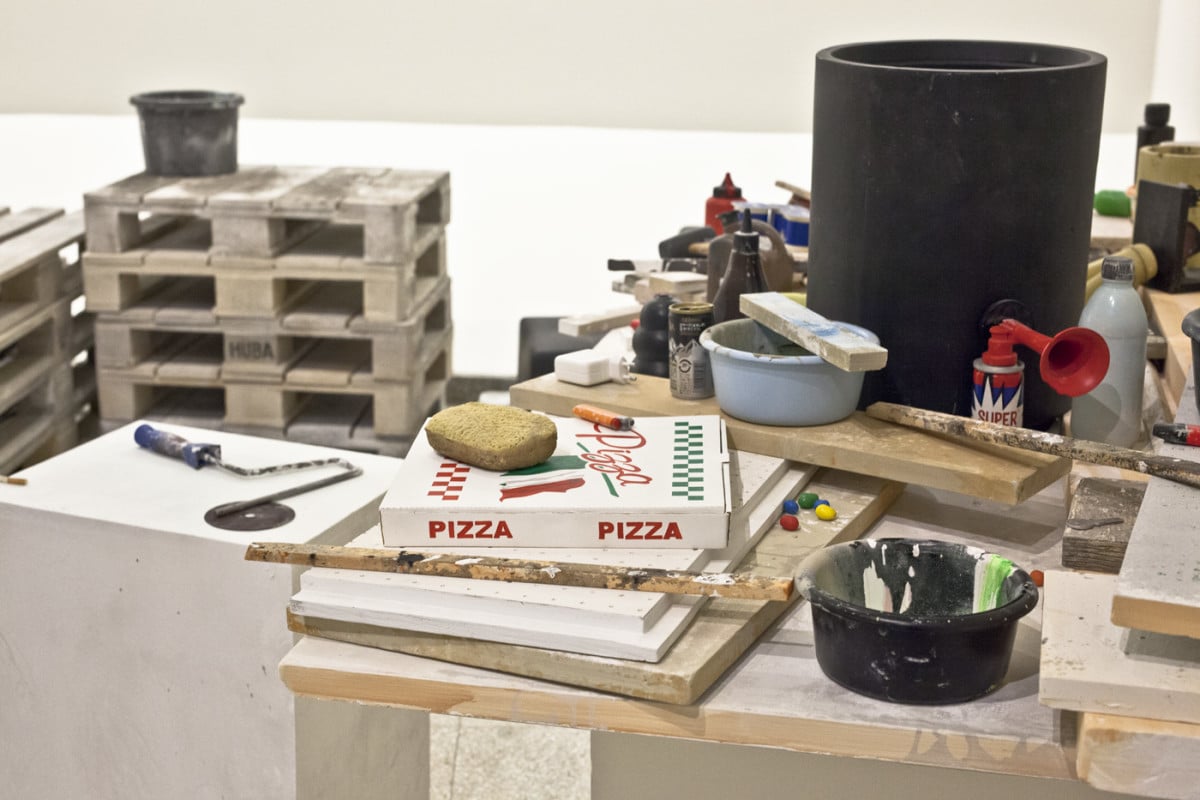Art & Exhibitions
Fischli and Weiss: Surface Fun that Repays a Deep Dive
THE DAILY PIC: At the Guggenheim, a pair of tricksters do philosophers' work.

THE DAILY PIC: At the Guggenheim, a pair of tricksters do philosophers' work.

by
Blake Gopnik


THE DAILY PIC (#1505): I finally went to see “Peter Fischli David Weiss: How to Work Better,” at the Guggenheim Museum in New York, and even weeks into the show its pizza-eating art installers still hadn’t cleaned up the mess they left behind on the top floor.
Or rather, not.
What I’m showing in today’s Pic is actually a laboriously crafted simulation of such a mess, made entirely from carved and painted polyurethane. That kind of trompe-l’oeil work can always come off as fun and glib, which is an accusation that can be leveled at all the art made by the team of Fischli and Weiss, from The Way Things Go, their utterly irresistible Rube Goldberg video, to the 600 goofy clay sculptures of Suddenly This Overview, depicting whimsical world-historical scenes such as Mr. and Mrs. Einstein in bed just after conceiving Albert and Frankenstein’s monster sniffing a flower. But like the serious play of toddlers (a shout-out here to my sister Alison) the games at the Guggenheim have depths that approach the philosophical.
Herewith five deep-ish reflections on the superficial, simulated jumble seen in today’s Pic:
1) If the piece seems to represent the chaos of an artist’s studio, is it in fact deliberately re-presenting a cliché? Given the absurd level of detail in the simulation, isn’t the studio where it gets made more likely to look like the cleanest of labs? How many paint rollers were really used in the making of these minutely crafted objects? (Which of course include the paint roller itself.)
2) Even if the tableau at the Guggenheim really does reproduce the mess of the Fischli-Weiss studio, it can’t reproduce what was left behind from making this particular pile of trash– since that mess would have to exist beforehand in order for it to be reproduced. That means that there must have been some other mess produced in the making of this (simulated) one – a second-order mess that itself could then be reproduced, and so on ad infinitum.
3) The leftovers of art production are being presented as the goal of art production, apparently in celebration of pure aesthetic labor and in rejection of its fancy products. That sounds highly principled … except that what this “pure” labor produces is in fact a fake image of itself at work – an image which turns out to be the fanciest of fancy products. So does that celebrate the raw effort of making art, or take advantage of it?
4) There’s a long and glorious tradition of making visible the process behind works of art. But it’s hard to know if the Fischli-Weiss simulation of studio process belongs in that tradition or rejects it. After all, we get absolutely no clue about how the simulation itself was made.
5) Maybe, like so many artists in our end-of-days, post-postmoden art world, Fischli and Weiss are despairing at the prospect at making meaningful works of art. All today’s artist can do is toil in the studio for the sake of the toil, without hope of coming up with a final product that can take its place as the latest innovation in some proud tradition. Without hope, say, of coming up with an impressive, novel, philosophical contribution to the great tradition of trompe-l’oeil – precisely as Fischli and Weiss have done. (Photo by Lucy Hogg)
For a full survey of past Daily Pics visit blakegopnik.com/archive.